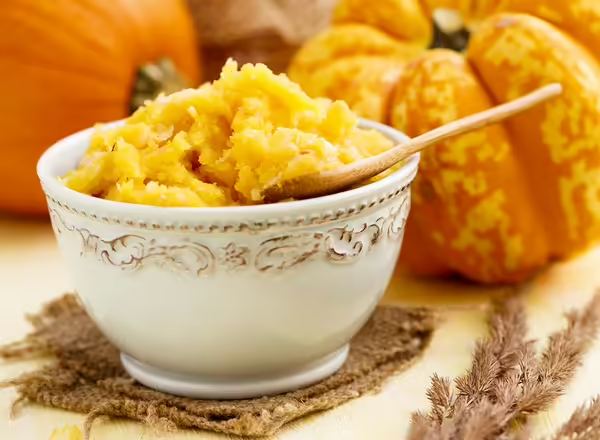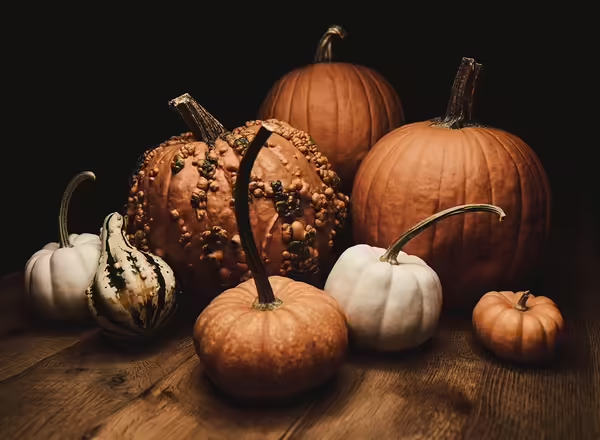Before selecting your pumpkin, you have to decide what the pumpkin’s intended use will be. This is because, like many things in life, not all pumpkins are created equal. Thus, if you are planning on cooking or baking with your pumpkin, you should consider these factors.

More likely than not, if you are at a pumpkin farm and picking your own pumpkin, you are buying an ornamental pumpkin. These pumpkins are great for decorating and carving. They generally have bright orange smooth skin, can be very large, and have a stem.
Although you may be tempted, it is important to understand the stem is not intended to be a handle. Once the stem breaks off, that section of the pumpkin becomes exposed, increasing the chance of the pumpkin spoiling prematurely.
Look for a pumpkin with 1 to 2 inches of stem left. If the stem is cut down too low the pumpkin will decay quickly or may be decaying at the time of purchase. Avoid pumpkins with blemishes and soft spots. It should be heavy, shape is unimportant. A lopsided pumpkin is not necessarily a bad pumpkin.

Processing pumpkins, sometimes called “pie” or “sweet” pumpkins, are more desirable for baking or cooking. These pumpkins have high sugar content, are more flavorful, less watery, and have smooth-textured flesh. Pie pumpkins are generally smaller and have a less grainy texture compared to jack-o-lantern pumpkins.
When selecting baking pumpkins, pick smaller pumpkins, ideally between 4-8 pounds. If you do not have a scale handy, simply choose a pumpkin that seems heavy for its size; this will indicate a great pumpkin!
Select a firm, unblemished pumpkin, free of soft spots, nicks, cuts, or cracks. You will also want to make sure your pumpkin has a stem, especially if you are not planning to bake it in the immediate future.

Pumpkins have a long shelf life. If stored correctly, you can keep pumpkins for three to six months. Store pumpkins in a cool, dark location, between 45-50°F. Make sure they are stored away from any ripening fruit or vegetables such as apples, potatoes, or tomatoes. During the ripening process, these foods release ethylene gas, which may shorten the life of your pumpkin.
During storage, the color of your pumpkin may change and become dull due to aging. Do not be alarmed by this; it does not mean your pumpkin quality has decreased. In fact, in some varieties of pumpkins, the sugar content may increase.